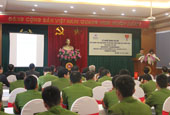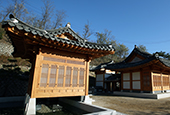Libraries are evolving into cultural centers. Only a few decades ago, libraries were literally places where people read physical books and studied for exams. There were also large gaps in the level of libraries between cities and rural areas, and between Seoul and other regions. There were stories of people walking a few kilometers just to borrow a book. However, industrialization and rapid economic development in the 1980s, and the development of information communications technologies (ICT), quickly reduced the gap in accessibility to information between cities and rural areas.
Korea.net recently visited the Cheongun Literature Library in central Seoul, Jeung Pyeong County Library in Jeongpyeong County, Chungcheongbuk-do (North Chungcheong Province), Danyang Danuri Library in Danyang, an area surrounded by the Namhangang River and the Sobaek Mountains in Chungcheongbuk-do, and, finally, the U-Library in Gwanak District, one of the lower-income neighborhoods of Seoul.
These libraries are no longer spaces where people just read books. They are in transition, becoming cultural centers where people are provided with lectures on the humanities and can receive practical training. Visitors also have access to digital information and have a chance to watch films. Although these four libraries do not represent all 865 public libraries across Korea (as of December 2013), they certainly show the trend.





Danyang Danuri Library in Danyang, Chungcheongbuk-do, has books and spaces for immigrants.
The first library visited by Korea.net was Danyang Danuri Library in Danyang, Chungcheongbuk-do. Located on the banks of the Namhangang River, this library has a view of an arched bridge and a clean river. The library has books and periodicals, as well as information for multicultural families and immigrants. There is a breastfeeding room, a digital information room and study rooms, among other facilities. The library recently started lending books in bags for children. It will lend five recommended books per bag for children who are about to enter elementary school. The library intends to expand the same service in the latter half of this year. In March 2014, the library began sending eight volunteers to homes across the region to help preschoolers read books. This service has been well received by both parents and the community. The service is known to provide a chance for children to become familiar with books, especially those who would otherwise have fewer opportunities to read books.
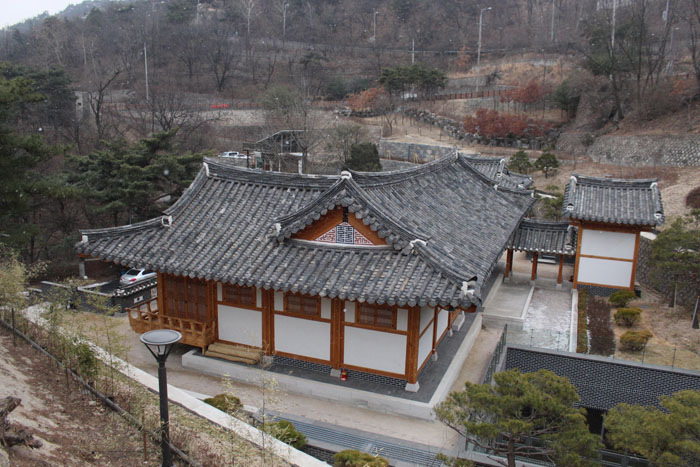
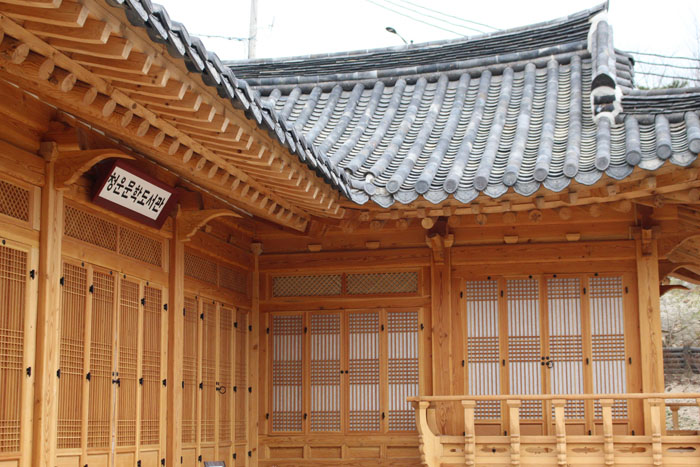
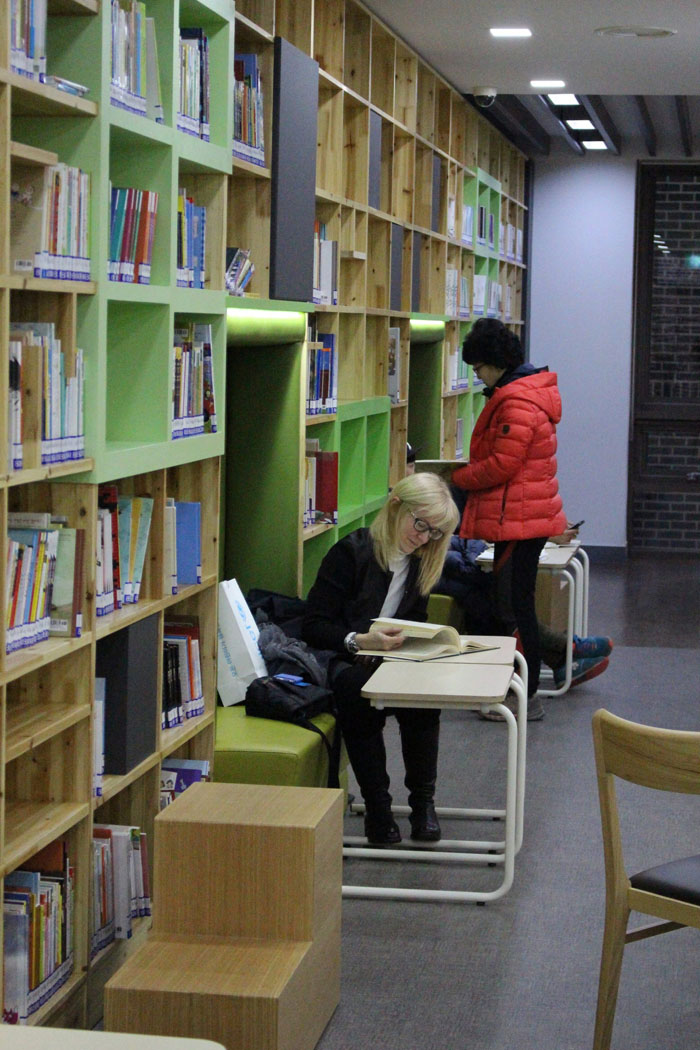

The Cheongun Literature Library in central Seoul has mostly books of literature, including poetry and novels.
The Cheongun Literature Library, located at the foot of Inwangsan Mountain in Seoul, opened in November 2014. The library sits inside a newly-built traditional Korean house and its shape is in harmony with the surrounding nature, including the rocky Inwangsan and Bukaksan mountains.
The shelves are stacked with books of literature, such as poetry, novels and essays. On the first floor, there are two writing rooms and a seminar room where authors can unveil their books or where people can have discussions about literature. In the basement, there are bookshelves for adults and children, as well as a meeting room, a café and an exhibition hall. Outside the library, there are many places people can visit, such as the Yoon Dong-ju Literature Hall, the Seoul Fortress, Cheong Wa Dae and various cafés. People can take a walk around the neighborhood or can casually read books in the library and refresh themselves.
Jeungpyeong County in Chungcheongbuk-do is a small region that consists of Jeungpyeong-eup and Doan-myeon, covering some 81.8 square kilometers. There are 34,000 residents. It is the second smallest county in the country by size, after Ulleung County (72.8 square kilometers) in Gyeongsangbuk-do (North Gyeongsang Province). The Jeung Pyeong County Library opened in April 2014, has high-tech facilities and provides various services. There are newspaper-sized digital screens on which people can read newspapers. Reading rooms are equipped with air filters, which help create a pleasant environment for readers. In the multipurpose hall, the latest films are shown every week for free. It has been open for eight months, but has received over 200,000 visits per year. This is over five times the county's population.
"The reason for the rapid rise in the number of readers is contributed to our integrated services that cover nearby regions, including Eumseong, Jincheon, Goesan and Cheongju," said Yu Jae-mun, a government employee at the library. "It is also because of our lifelong learning services, including foreign languages and practical skills."







Jeung Pyeong County Library in Chungcheongbuk-do offers various services and spaces, including a room for preschoolers, a lifelong learning room and a multipurpose room.
The Gwanak District in Seoul has 540,000 people and is a typical low-income neighborhood. There are as many as 43 libraries there. They are not in large buildings, but they are located near places with high traffic, such as subway stations and residential community centers. Small libraries in such residential community centers have been renovated and expanded. Forty-foot shipping containers have also been transformed into libraries. This shows that the district did not spend much money in building its new library facilities.


A small library on the first floor of the Gwanak District Office has 1,000 visitors per day. Office space was remodeled and transformed into the library.
The Gwanak District Office also came up with new ways to deliver books to its residents. People can order books through their smartphone library apps and books are delivered to the nearest library by minivan. After reading, they return the books to any library that is convenient for them. The libraries are no longer exclusive property for people who have a lot of spare time. Even shoe shiners and deliverymen can easily order, borrow and read books.


The so called 'Small Library' near Dorimcheon Stream in Gwanak District, Seoul, is made of a forty-foot container. The name 'Small Library in Which a Dragon is Born from a small stream' comes from an old Korean proverb, meaning , 'to rise from a humble family.'
In the 21st century, an age of information, society considers libraries to be lifelong educational community centers and is using them to improve national competitiveness and to train creative and talented human resources. In 2013, the Presidential Committee on Library and Information Policy completed the first phase of its comprehensive library development plan (2009-2013) and it is now working on the second phase (2014-2018). Accordingly, the government is trying to expand services that cater to different age groups, to provide services for those who are marginalized by society and to strengthen educational, learning and academic research services in a bid to use libraries as a means to make people happier and to improve their life prospects. In line with these goals, the government has set aside KRW 758.3 billion to support public libraries in 2015.
By Wi Tack-whan, Limb Jae-un
Photo: Wi Tack-whan, Jeon Han, Gwanak District Office
Korea.net Staff Writers
whan23@korea.kr
Related links
Danyang Danuri Library: https://www.danuri.go.kr/lib/
Jeung Pyeong Country Library: http://lib.jp.go.kr/
Jongno Book-loving Small Library: http://lib.jongno.go.kr/
Gwanak Library Center: http://lib.gwanak.go.kr/
Related Contents
Most popular
- Korea.net welcomes 2025 K-influencers, Honorary Reporters
- 2025 Honorary Reporter class pledges to spread 'real Korea' worldwide
- Actor Bae Doona's first romcom in decade to hit theaters in May
- US urged to exempt tariffs on Korea in first '2+2' trade talks
- 'Gangnam Style,' 'Baby Shark' make YouTube's 2005-25 best list
